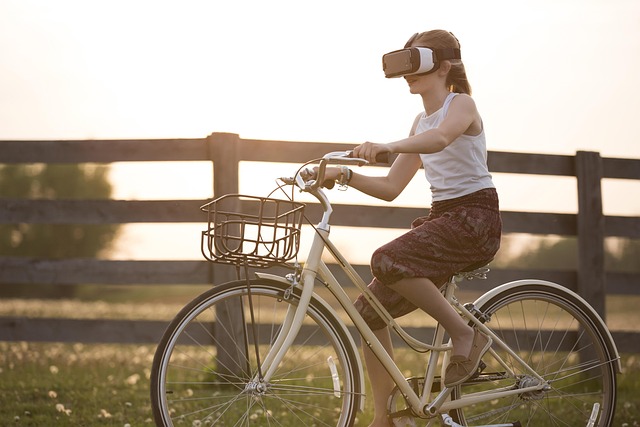AR in 2024: From Novelty to Necessity
The AR Landscape Today
Augmented Reality (AR) isn’t just a tech buzzword anymore—it’s a rapidly growing tool that’s reshaping how content creators and audiences interact. In 2024, AR has evolved into a practical, accessible, and highly customizable medium.
Here’s a snapshot of the current AR scene:
- Mainstream Adoption: From entertainment to education and e-commerce, AR is no longer limited to tech enthusiasts. Brands, creators, and even educators are embracing it.
- Stronger Infrastructure: AR glasses and smartphone cameras now support smoother, more realistic integrations.
- Cross-Platform Integration: AR experiences are becoming more consistent across platforms like Instagram, TikTok, Snapchat, and even YouTube.
How AR Matured Over Five Years
Just five years ago, AR was largely seen as a gimmick—a flashy way to add filters or gimmicky lenses to video content. But continual investment and user-driven innovation have turned it into a functional creative tool.
Key shifts since 2019:
- From Filters to Function: Face filters were just the beginning. Now, AR is used for product demos, virtual try-ons, and immersive tutorials.
- Creator Tools Expanded: Platforms have rapidly improved their AR development kits, making it easier for creators of all sizes to experiment.
- Consumer Expectations: Viewers now expect interactivity or added layers of engagement in the content they consume.
AR Is More Than Just Play
While games and filters helped AR gain traction, its purpose in 2024 spans far beyond entertainment. For creators, this means new opportunities to tell stories, share knowledge, and drive sales.
Ways AR is being used beyond gaming:
- Virtual Product Walkthroughs: Great for brands, content creators, and affiliate marketers.
- Interactive Learn-Alongs: Tutorials that integrate text, visuals, and gestures in real-time.
- Live AR Enhancements: Used during livestreams to add visual effects, animate environments, or show audience engagement.
AR has matured—and savvy creators are using it to stand out not by adding noise, but by enhancing value.
Immersive Shopping Is Changing the Game
Augmented reality (AR) isn’t just for gaming anymore. In 2024, it’s redefining how consumers engage with fashion, beauty, and retail. Virtual experiences are creating more personalized and interactive paths to purchase, influencing everything from what we buy to how loyal we remain to a brand.
Virtual Try-Ons: Personalized, Convenient, Engaging
Trying before buying has gone digital. Virtual try-ons are now common in both fashion and beauty sectors, offering consumers a fast, personalized way to see how items look and feel before committing.
- Fashion: See how clothes fit, move, and match your style from your phone or laptop
- Beauty: Test shades and tones against your skin in real time without ever opening a bottle
- Customization: Blend AI with AR to generate product recommendations tailored to your preferences and facial features
In-Store Upgrades: AR-Enhanced Layouts and Experiences
Brick-and-mortar retail isn’t dead—it’s getting smarter. AR-powered layouts are transforming physical stores into dynamic, interactive experiences.
- Overlays guide shoppers to deals or personalized suggestions through their phones
- Virtual product previews reduce the overwhelm of choice, especially in tech or high-ticket items
- QR-coded experiences offer additional product context, tutorials, or user reviews right in-store
Building Loyalty Through Experience
Brands aren’t just using AR to convert—they’re using it to connect. Immersive shopping blurs the line between ecommerce and entertainment, giving consumers an experience that goes beyond the transaction.
- Interactive try-ons and previews increase time spent with the brand
- Personalized AR journeys make customers feel seen and valued
- Unique, memorable experiences encourage repeat visits and long-term loyalty
The future of shopping doesn’t just live online or in-store—it thrives where both worlds meet.
Augmented Reality is Powering Smarter Hands-On Work
Augmented Reality (AR) is moving from a futuristic concept to an essential tool across high-skill, hands-on industries. In 2024, AR is transforming how professionals diagnose, build, and train—especially in sectors like manufacturing and aerospace.
Real-Time AR Overlays for Maintenance and Troubleshooting
Technicians are no longer working from bulky manuals or static diagrams. With smart devices and AR glasses, they can now access real-time overlays that display:
- Step-by-step repair procedures
- Part identification and diagnostics
- Interactive guidance for troubleshooting complex systems
This reduces errors, speeds up service times, and lowers training barriers for newer technicians.
Smarter Assembly Line Optimization
AR-equipped smart visors are streamlining production processes in manufacturing environments. These tools offer:
- Visual cueing for proper component placement
- Automatic quality checks during assembly
- Live feedback for reducing process deviation
By integrating AR into assembly lines, companies are eliminating guesswork and boosting productivity on the factory floor.
Immersive Aerospace Training and Walkthroughs
In high-stakes industries like aerospace, AR is enhancing both safety and preparedness. Pilots, engineers, and ground crew now leverage AR to:
- Simulate realistic cockpit scenarios in training
- Walk through equipment operation before direct interaction
- Reinforce protocol comprehension with visual aids
AR ultimately helps reduce risk while optimizing the depth and retention of training experience.
As AR technology becomes more accessible and easier to integrate, expect to see even broader adoption across sectors that rely heavily on precision and knowledge sharing.
Augmented reality is doing more than turning living rooms into video game arenas—it’s pushing healthcare into faster, smarter territory. AR-assisted surgeries now let physicians overlay real-time data directly onto a patient’s body during procedures: angiograms, CT scans, even anatomical landmarks. The result? Less guesswork, more precision, and fewer hours on the table.
Training is getting sharper, too. Instead of learning on plastic models or watching grainy videos, med students and residents are stepping into hyper-real simulations. They can rehearse complex procedures, fail safely, and get feedback instantly—all without burning through supplies or patient trust. It’s cutting cost and risk at the same time.
On the patient side, AR is turning hospital visits into something more human. Interactive tools help explain diagnoses, visualize treatment options, and guide patients during post-op rehab. It’s no longer a one-way conversation from white coat to clipboard. AR makes care feel like a collaboration, not a lecture.
Augmented Learning Takes the Lead in Education
Schools and universities aren’t just putting AR into lesson plans—they’re building full interactive learning environments around it. Instead of flat diagrams and static lectures, students can now walk through a virtual heart, manipulate molecules in 3D space, or explore historical events inside immersive timelines. It’s not just a novelty. It’s how they’re learning.
Vocational training is also transforming. AR simulations let learners disassemble an engine, rewire a smart thermostat, or practice welding—all without touching a real tool. That kind of hands-on, visual experience sticks. It speeds up muscle memory and cuts down the gap between training and doing.
Under the hood, there’s real data driving all this. Institutions are tracking engagement and knowledge retention, and AR is outpacing most traditional formats. Students stay focused longer. Concepts click faster. And in a world where attention spans are shrinking, that’s a win classrooms can’t ignore.
Out in the field, augmented reality is starting to feel less like sci-fi and more like standard gear. Technicians are using AR headsets to diagnose and fix equipment on the spot—hands-free overlays guide them through complex repairs, shaving hours off service times and cutting down rework. It’s not flashy. It’s just effective.
At the same time, remote collaboration is gaining serious ground. Instead of flying experts across the country, teams are hopping on streamlined mixed-reality calls, advising field workers in real time. The environmental upside? Fewer flights, fewer emissions, lower costs. It’s a win for both operations and sustainability metrics.
Then there’s the quiet revolution happening on renewable energy sites. Data-layer overlays are helping crews monitor turbine output or solar panel efficiency without walking the grounds. Need a thermal scan? Just toggle the view. Problems get spotted faster, addressed smarter, and written into better long-term planning.
For a deeper dive into how all this fits into next-gen energy, check out Green Tech Innovations Driving the Next Generation of Power.
AR Tech Is Finally Catching Up to the Hype
For years, augmented reality felt more like a gimmick than a tool—but that’s changing fast. Hardware is getting slimmer, lighter, and finally wearable in real life. Mobile integration means creators can now layer AR elements into videos without hauling around a studio. Think filters, world effects, overlays—all on-the-go.
What’s powering this leap forward? Two things: 5G and edge computing. Together, they allow real-time AR rendering with low latency, making interactions feel smooth instead of awkward. That opens the door for vloggers to experiment with interactive storytelling, guided tours, and even live AR Q&As without the tech dragging them down.
Big tech and startups are also pouring serious money into this shift. Companies are betting that AR will be standard, not fringe. For creators, it means more tools and more accessible platforms to play in. The barrier to entry is lowering—just as the possibilities are expanding.
Augmented Reality Crosses Into Real Life
The gap between digital and physical is shrinking fast, and AR is leading the charge. What used to feel like a tech demo is now baked into real workflows—on film sets, in retail stores, and yes, in daily vlogs. Creators who experiment early are already finding creative and marketable ways to layer digital elements into real-world footage. Think interactive overlays during tutorials or live product demos with real-time 3D callouts.
Industries that jumped in early—fitness, fashion, gaming—are already getting results. Higher engagement, stronger product tie-ins, more immersive brand deals. For vloggers, that’s a hint: AR isn’t fluff anymore. It’s a functional tool, if you’re paying attention and willing to roll up your sleeves.
This tech still requires some gear and know-how, but the barriers are lower than ever. If you want to stand out on saturated platforms, blending your content with smart AR features could be the edge you need.


 Lead Software Strategist
Lead Software Strategist
